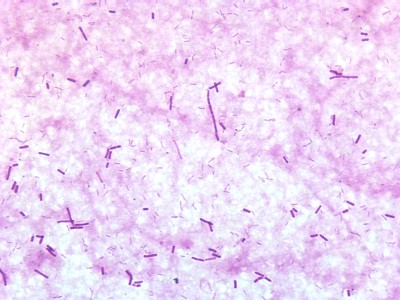 Environmental Biotechnology
Environmental Biotechnology
In collaboration with our international partners (Landcare Research, New Zealand and Victoria University, Canada) we are developing advanced technologies based on microbial system to mitigate GHG (mainly Methane) from animal husbandry, landfills and dairy industries. We are exploiting unculturable soil methane utilising bacteria to consume methane produced by cattle and sheep before it escapes in the atmosphere.
We have a strong interest in bioremediation of toxic compounds especially organophosphate (OP). Since 1999 we have collected a number of microbes which have capability to utilise and remove OP compounds from polluted environment. We are currently using metagenomic approach to isolate novel genes/enzymes which can have bioremedial and therapeutic usages in future.
Group Members;
- Dr. Brajesh K Singh
- Ms Nadine Thomas (Research staff)
- Ms Lucinda Robinson (Research Staff)
- Mr Loic Nazaries (PhD student)
External Collaborators
- Drs Kevin Tate and Surinder Saggar (Landcare Research, New Zealand),
- Dr. Real Roy (University of Victoria, Canada),
- Dr. Julia Gebert (University of Hamburgh, Germany),
- Dr. Dimitrious Karpouzas (University of Thessaly, Greece),
- Dr. Gary Bending (HRI Warwick).
Selected publications
- Singh, B.K. (2009). Organophosphorus-degrading bacteria: ecology and industrial applications. Nature Reviews Microbiology 7: 156-164.
- Singh B.K., and Walker, A. (2006). Microbial degradation of organophosphorus compounds. FEMS Microbiology Review. 30, 428-471.
- Karpouzas, D. and Singh, B.K. (2006). Organophosphorus xenobiotics: microbial degradation, metabolic pathways and molecular basis. Advances in Microbial Physiology, 51,119-185.
- Singh, B.K.,Walker, A. and Wright, D.J. (2006). Bioremedial potential of fenamiphos and chlorpyrifos degrading isolates: Influence of different environmental conditions. Soil Biology and Biochemistry, 38, 2682-2693
- Singh, B.K.,Walker, A. and Wright, D.J. (2005). Cross-enhancement of accelerated biodegradation of organophosphate compounds in soils: dependence on structural similarity. Soil Biology and Biochemistry, 37, 1675-1682.
- Karpouzas, D.G., Fotopoulou, A., Menkissoglu-Spiroudi, U. and Singh, B.K. (2005) Non-specific biodegradation of the organophosphorus pesticides, cadusafos and ethoprophos, by two bacterial isolates. FEMS Microbiology Ecology, 53, 369-378.
- Singh, B.K.,Walker, A., Morgan, A.W., and Wright, D.J. (2004). Biodegradation of Chlorpyrifos by Enterobacter Strain B-14 and Its Use in Bioremediation of Contaminated Soils. Applied and Environmental Microbiology, 70, 4855-4863. Singh, B.K.,Walker, A., Morgan, A.W., and Wright, D.J. (2003). Role of soil pH in the development of enhanced biodegradation of fenamiphos. Applied and Environmental Microbiology, 69, 7035-7043.
- Singh, B.K.,Walker, A., and Wright, D.J. (2002). Degradation of chlorpyrifos, fenamiphos, and chlorothalonil alone and in combination and their effects on soil microbial activity. Environmental Toxicology and Chemistry, 21, 2600-2605.
- Singh, B.K.,Walker, A., and Wright, D.J. (2002). Persistence of chlorpyrifos, fenamiphos, chlorothalonil and pendimethalin in soil and their effects on soil microbial characteristics. Bulletin Environmental Contamination and Toxicology, 69, 181-188.
|
Updated: 23 Jan 2024, Content by: BS
|

